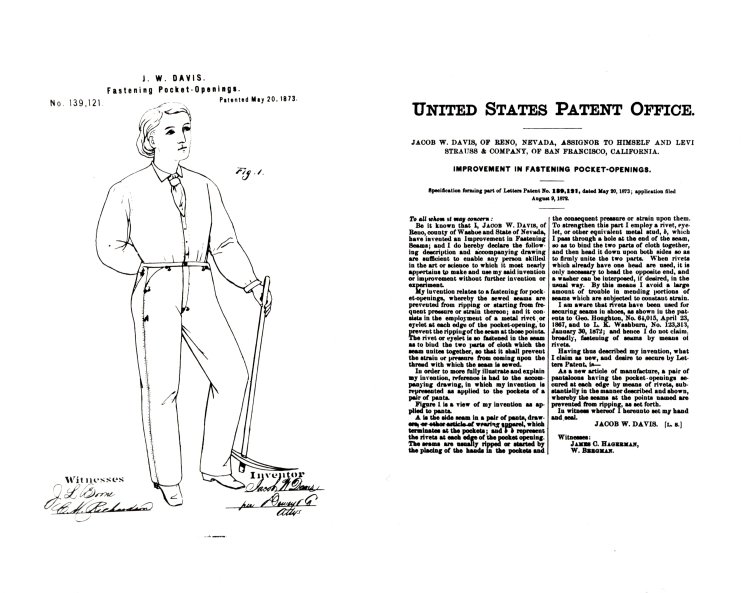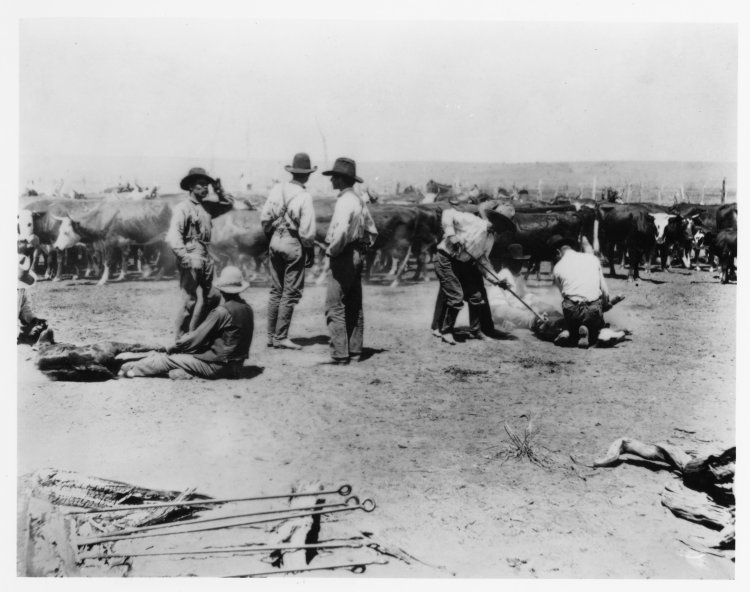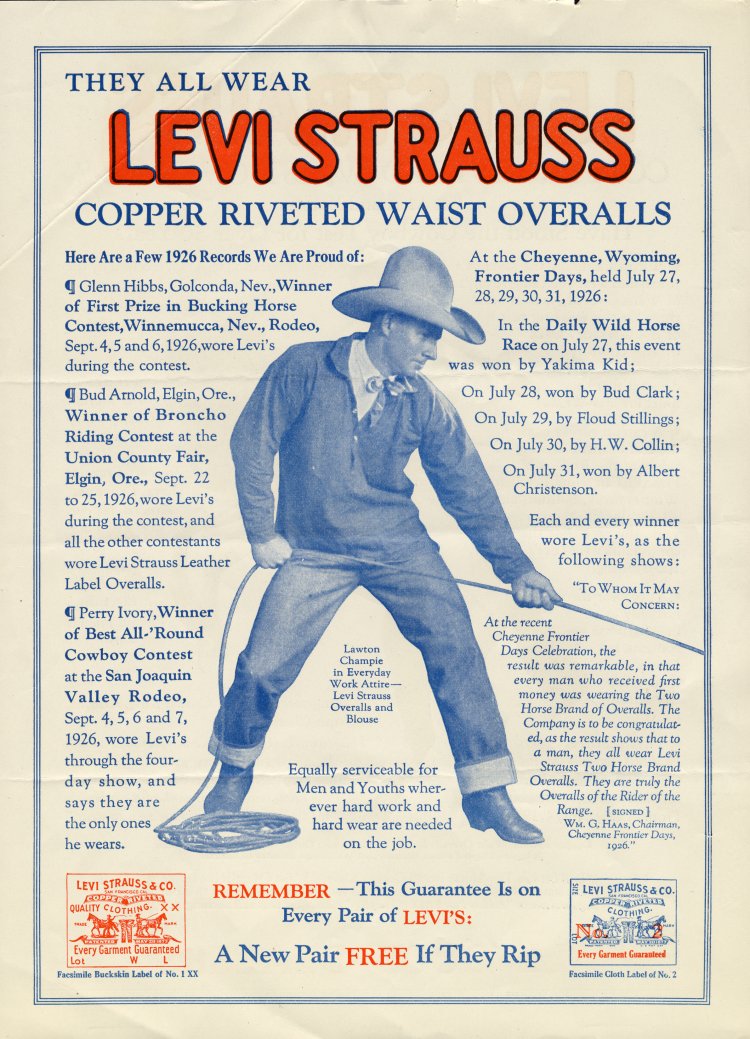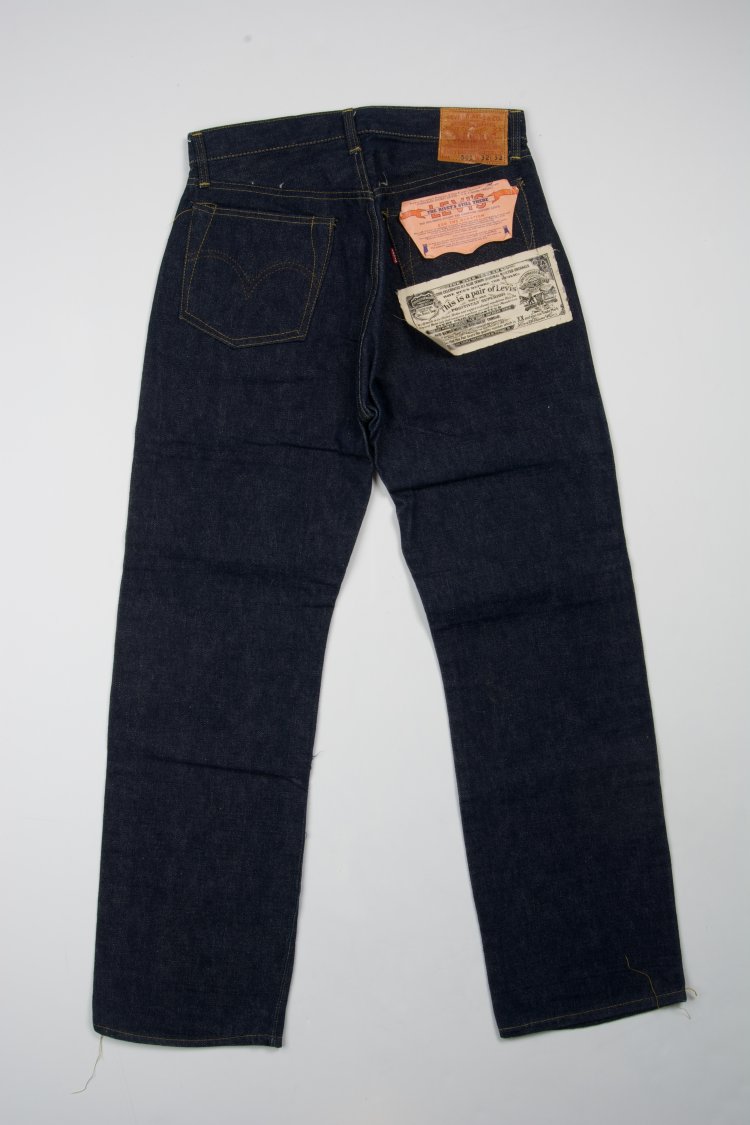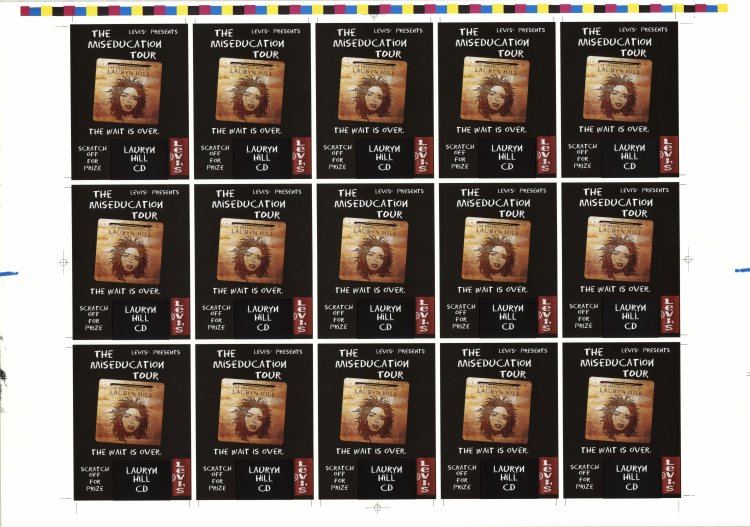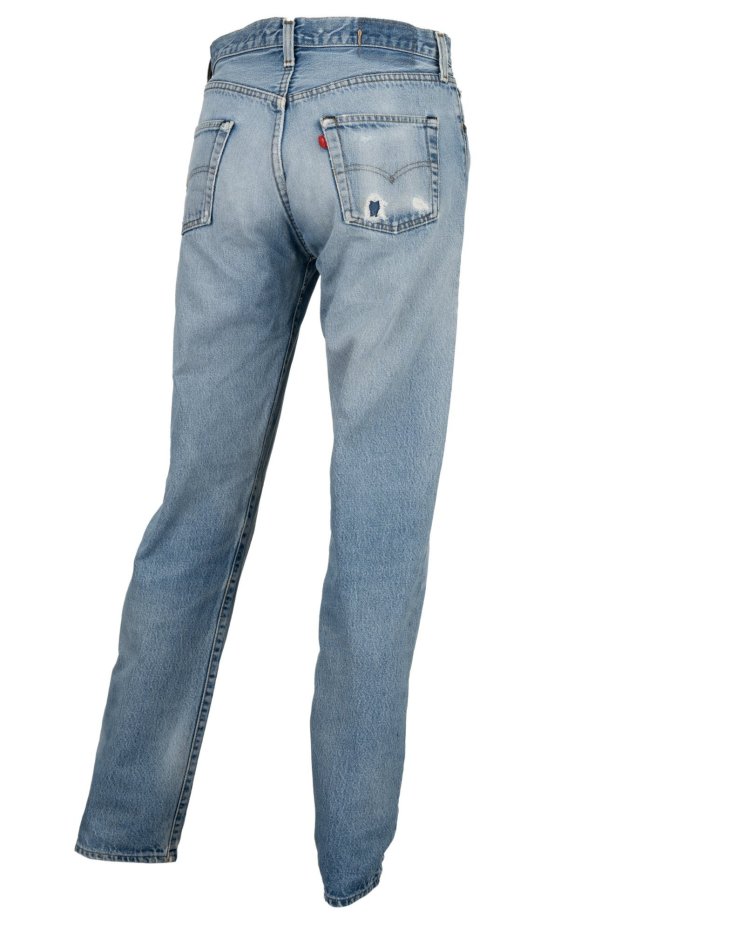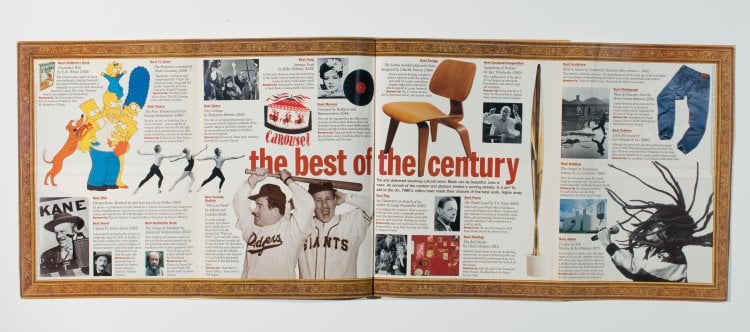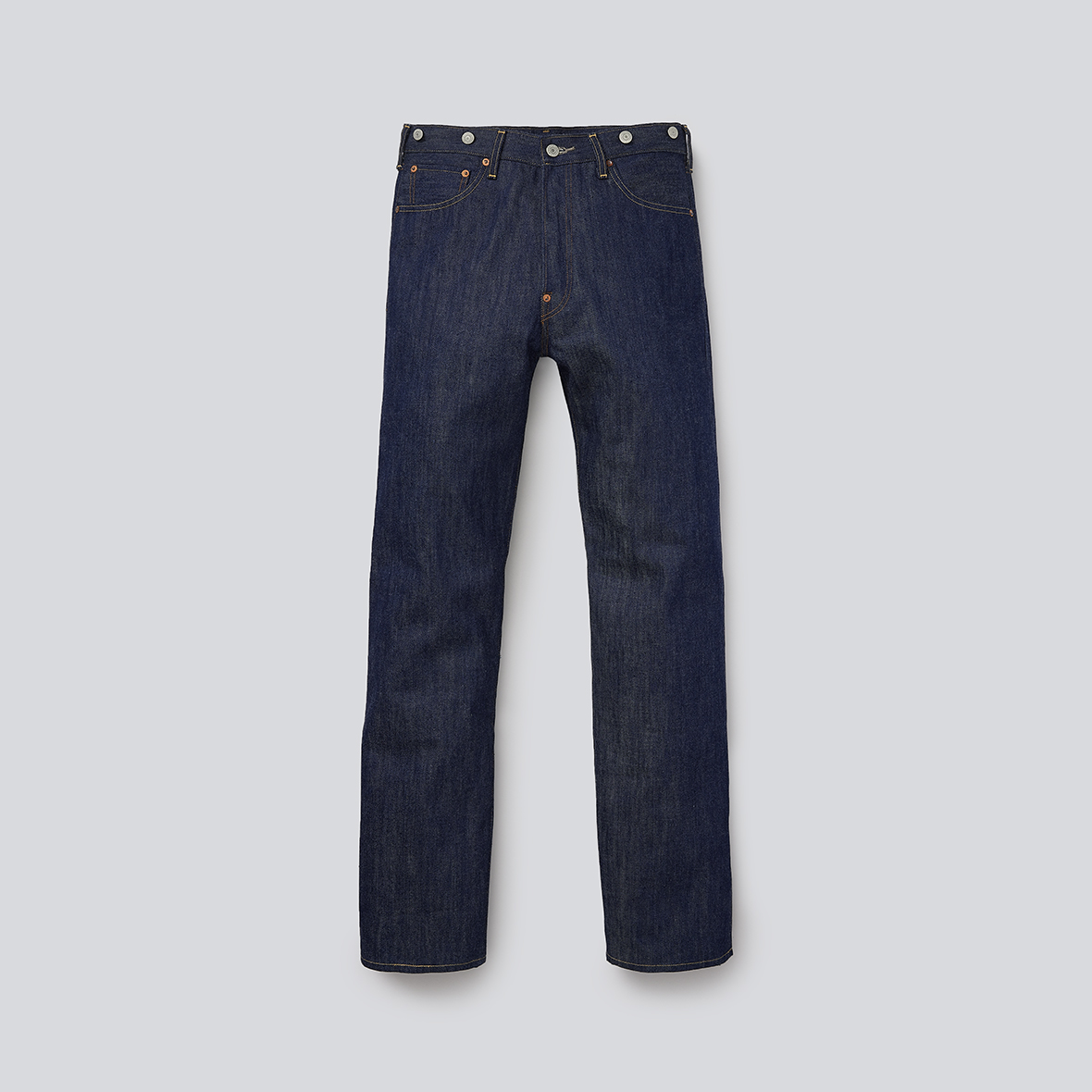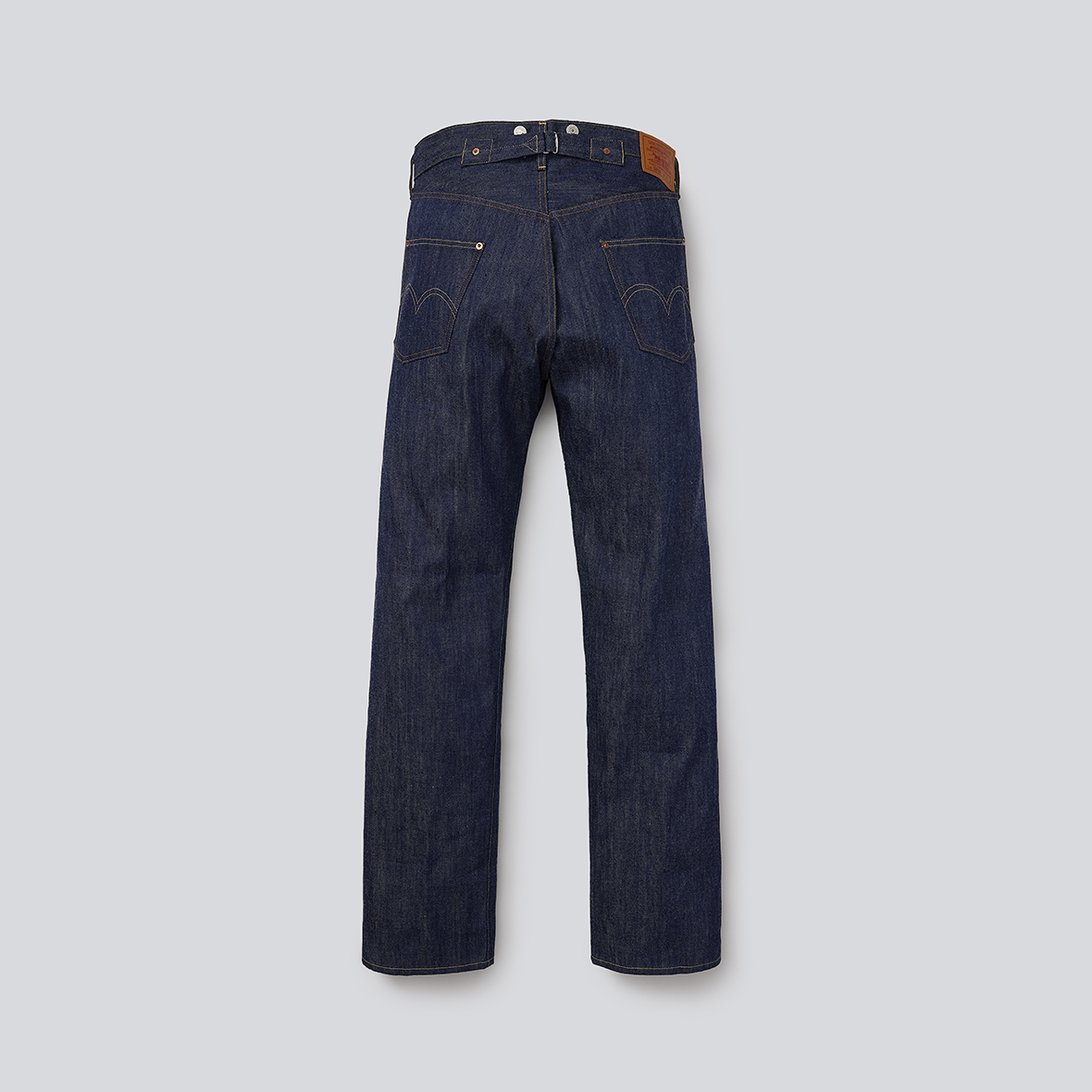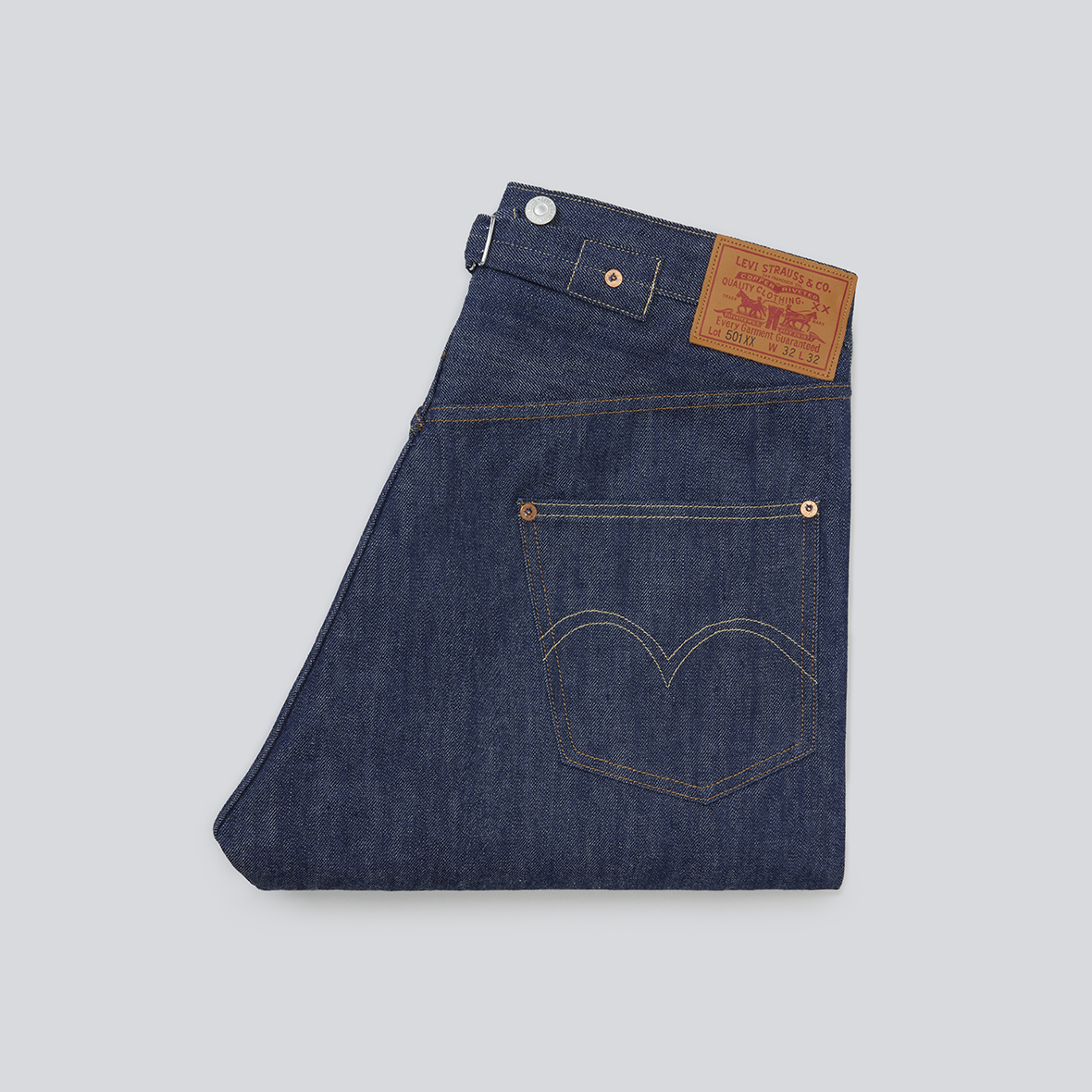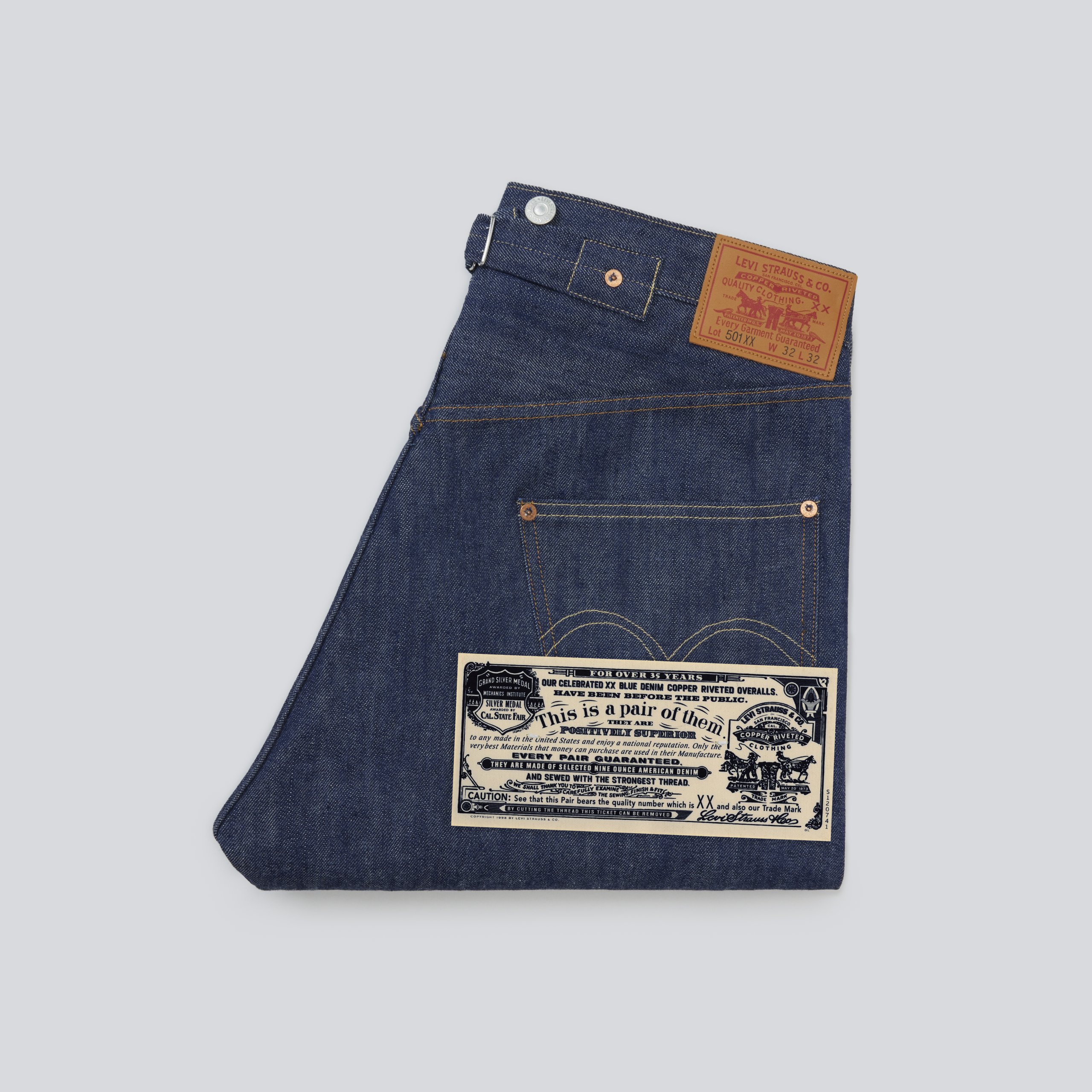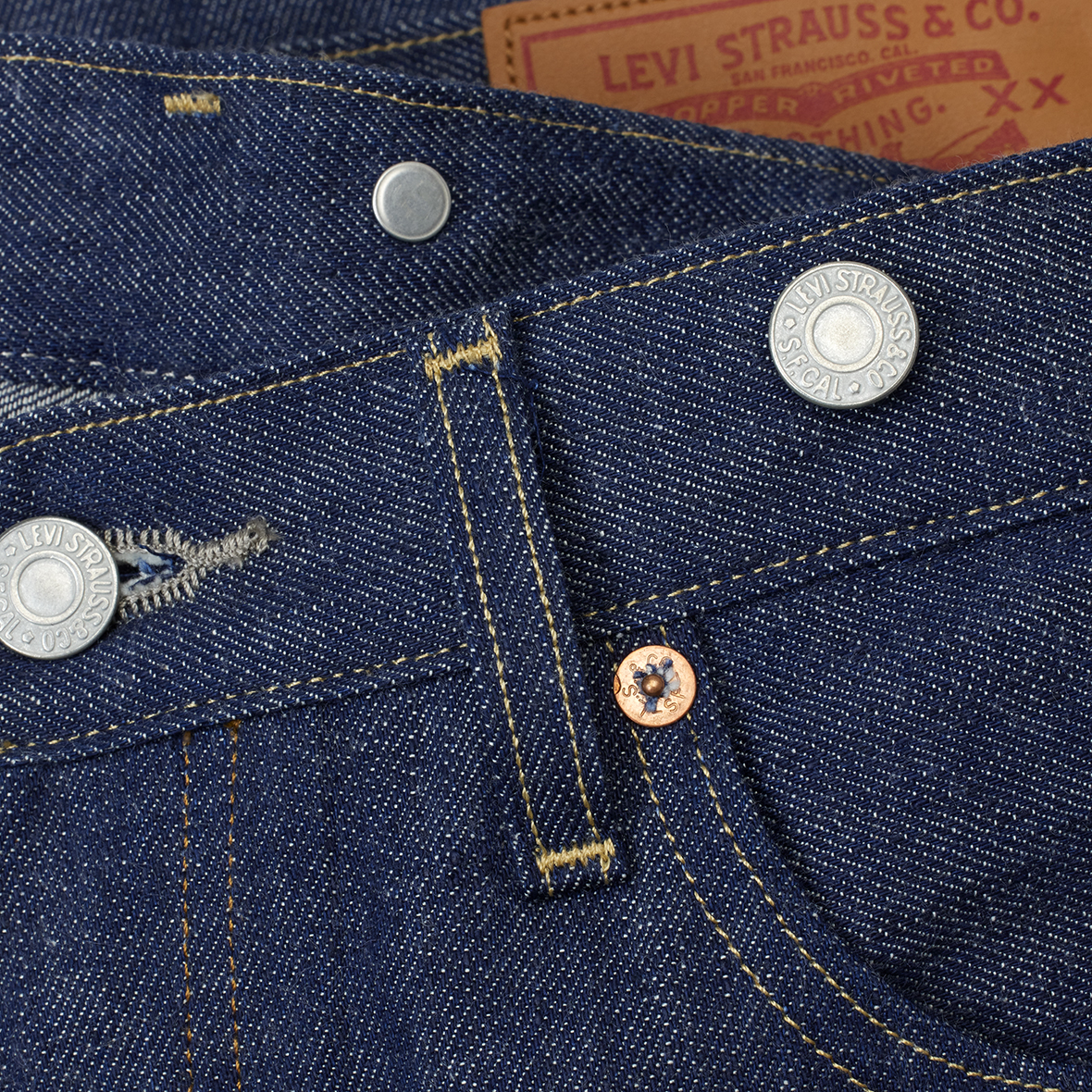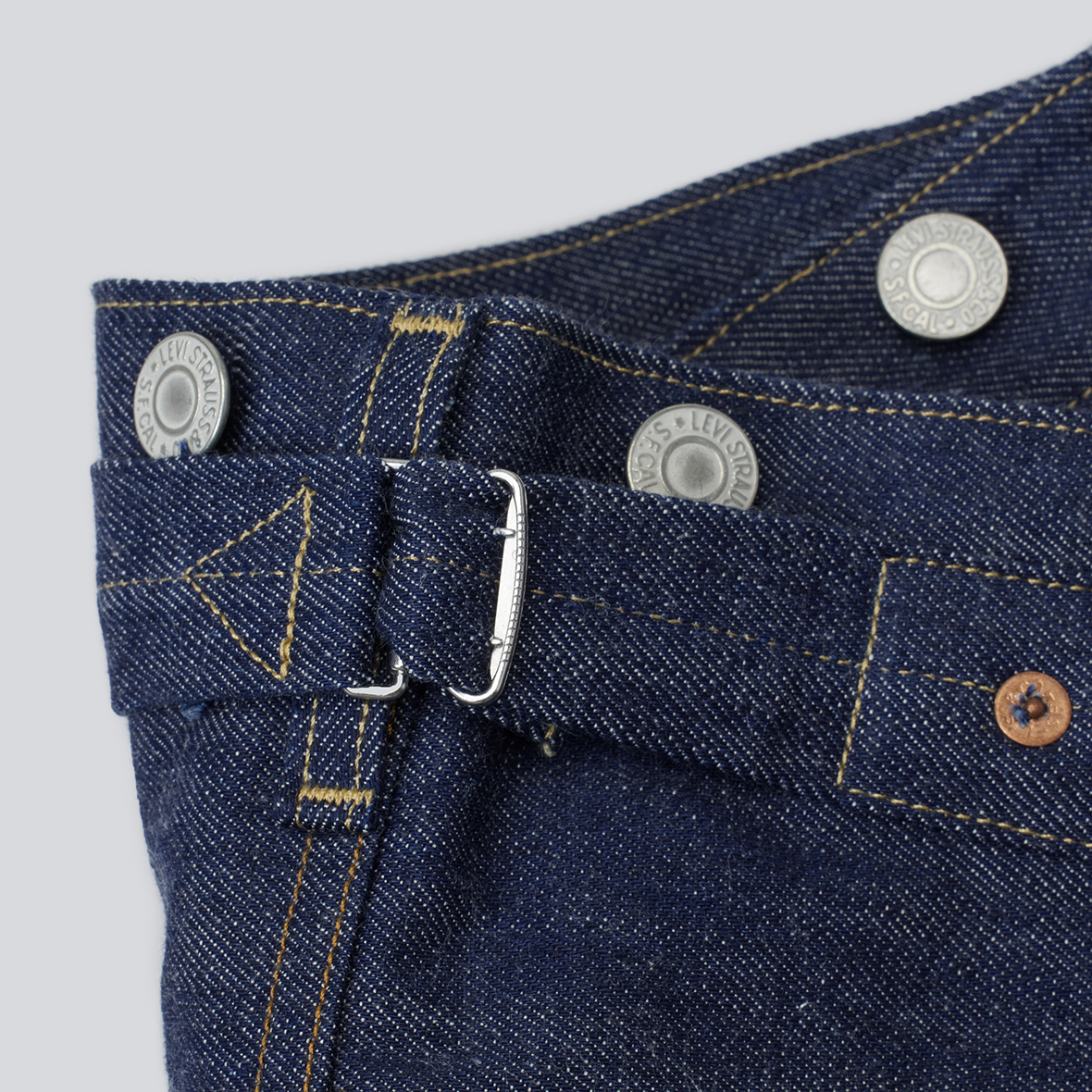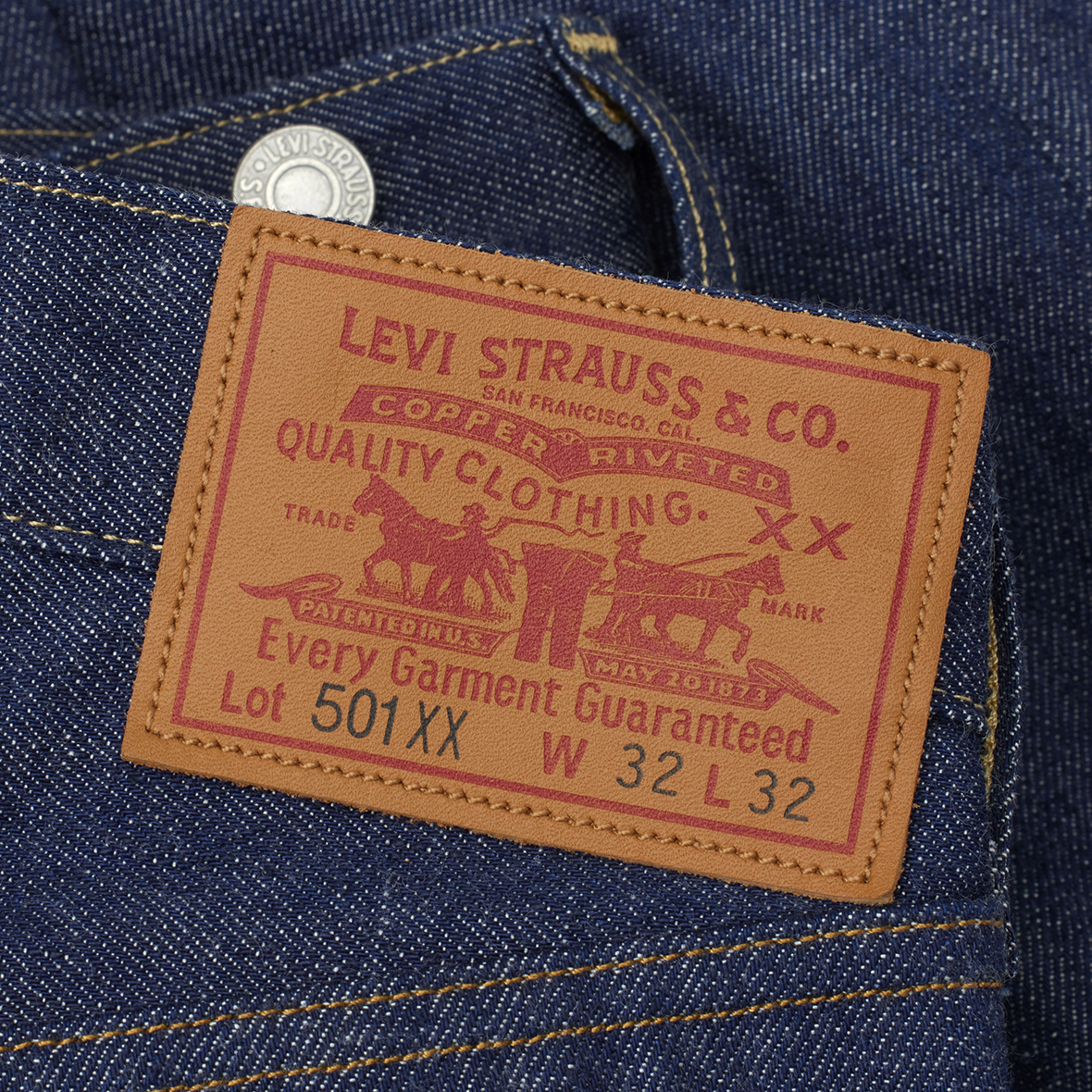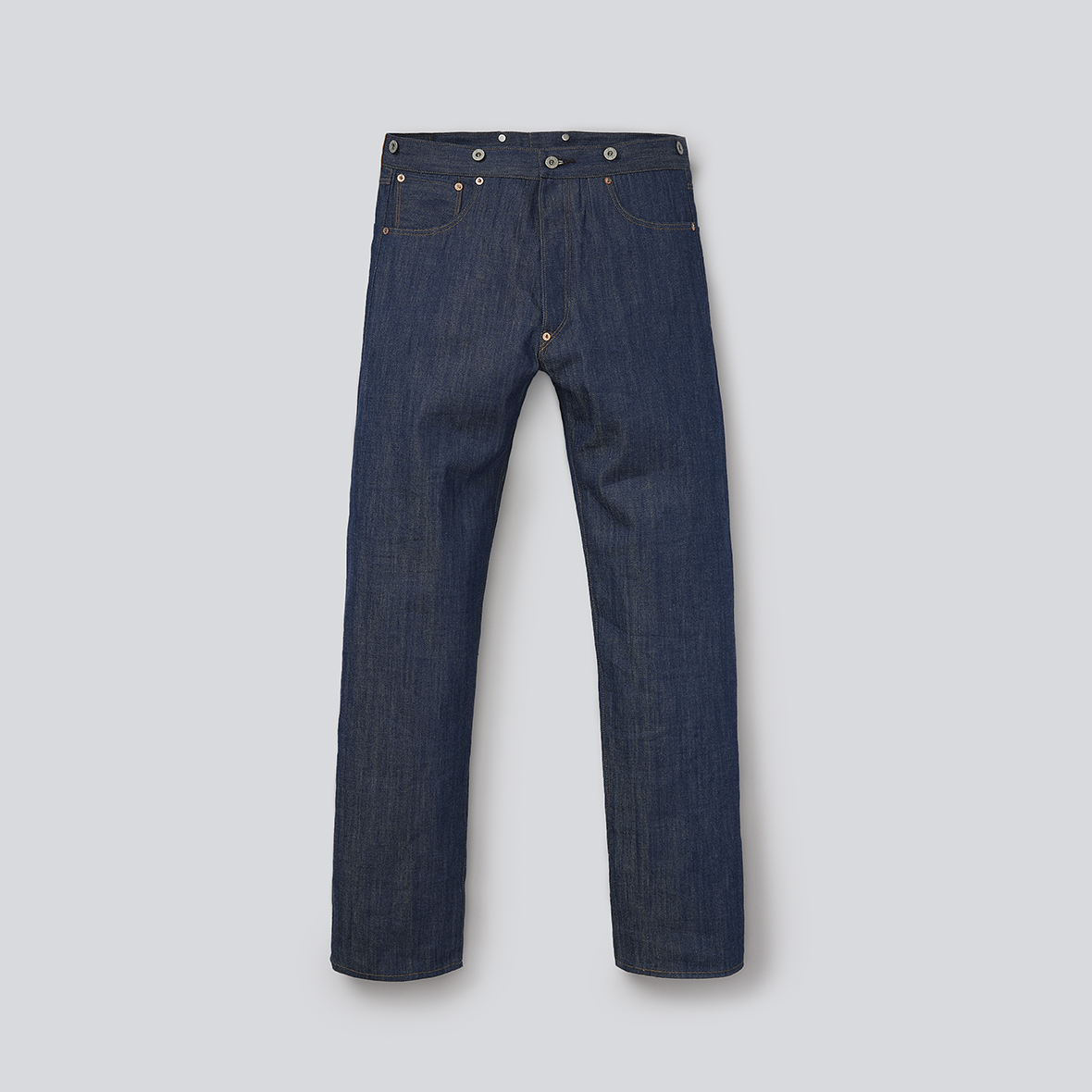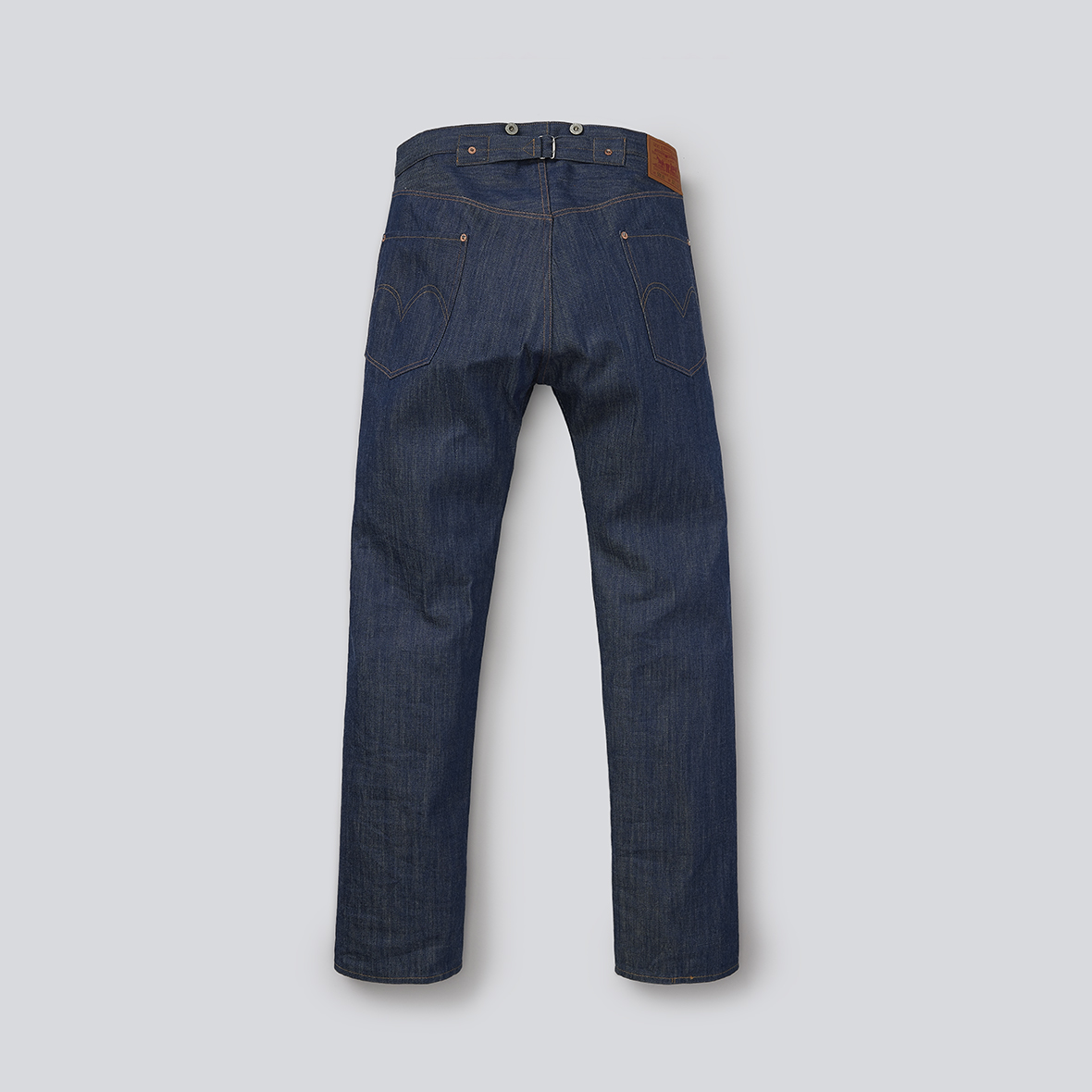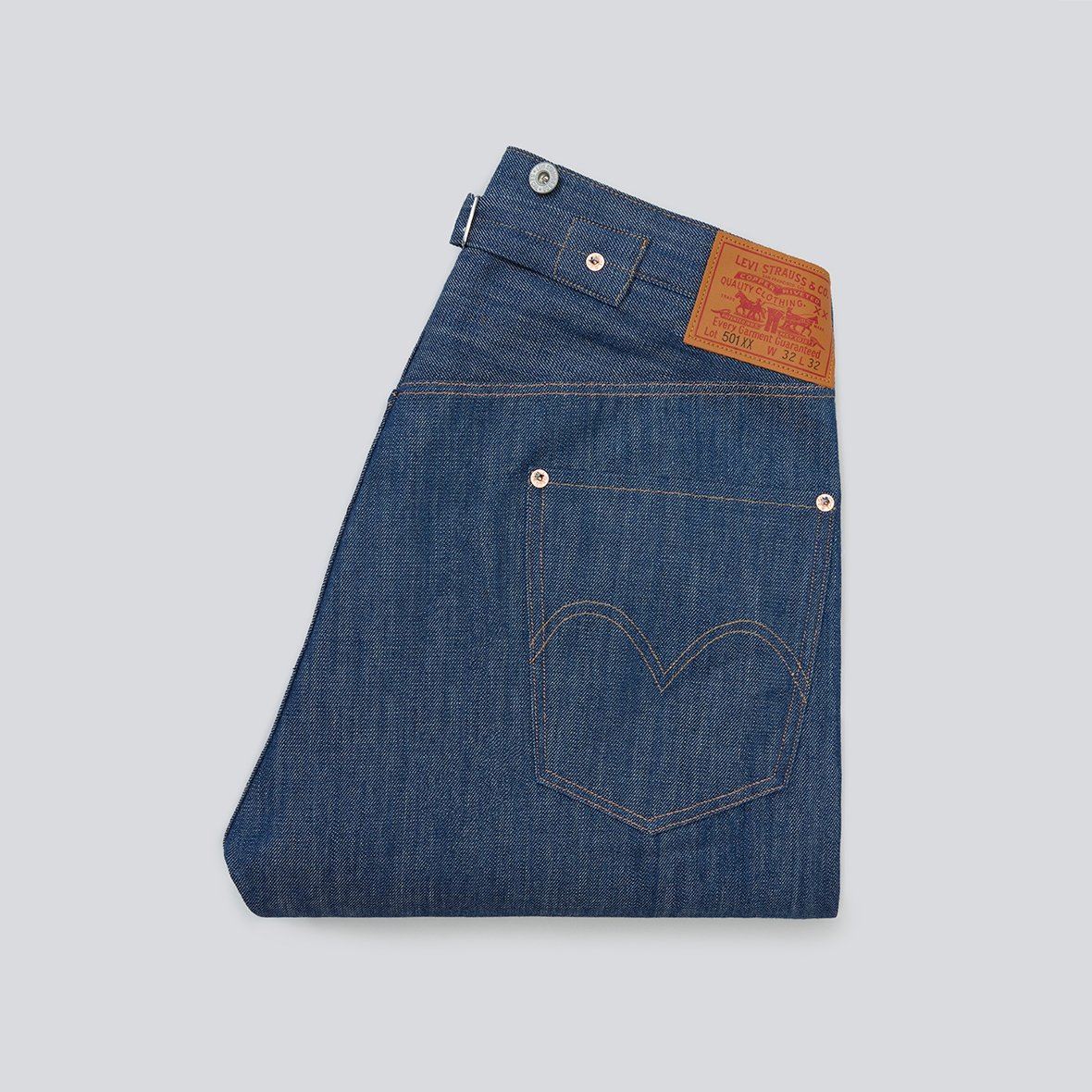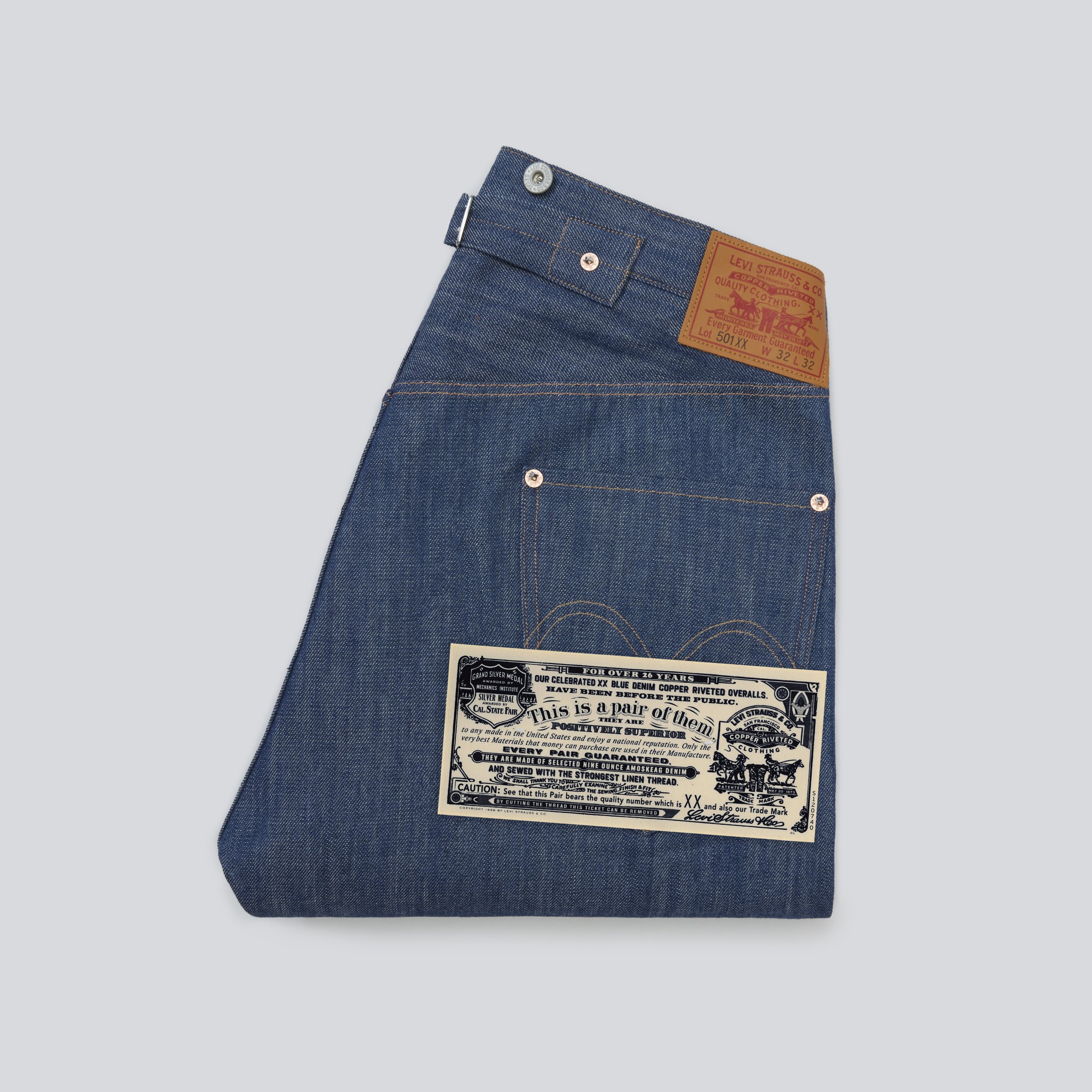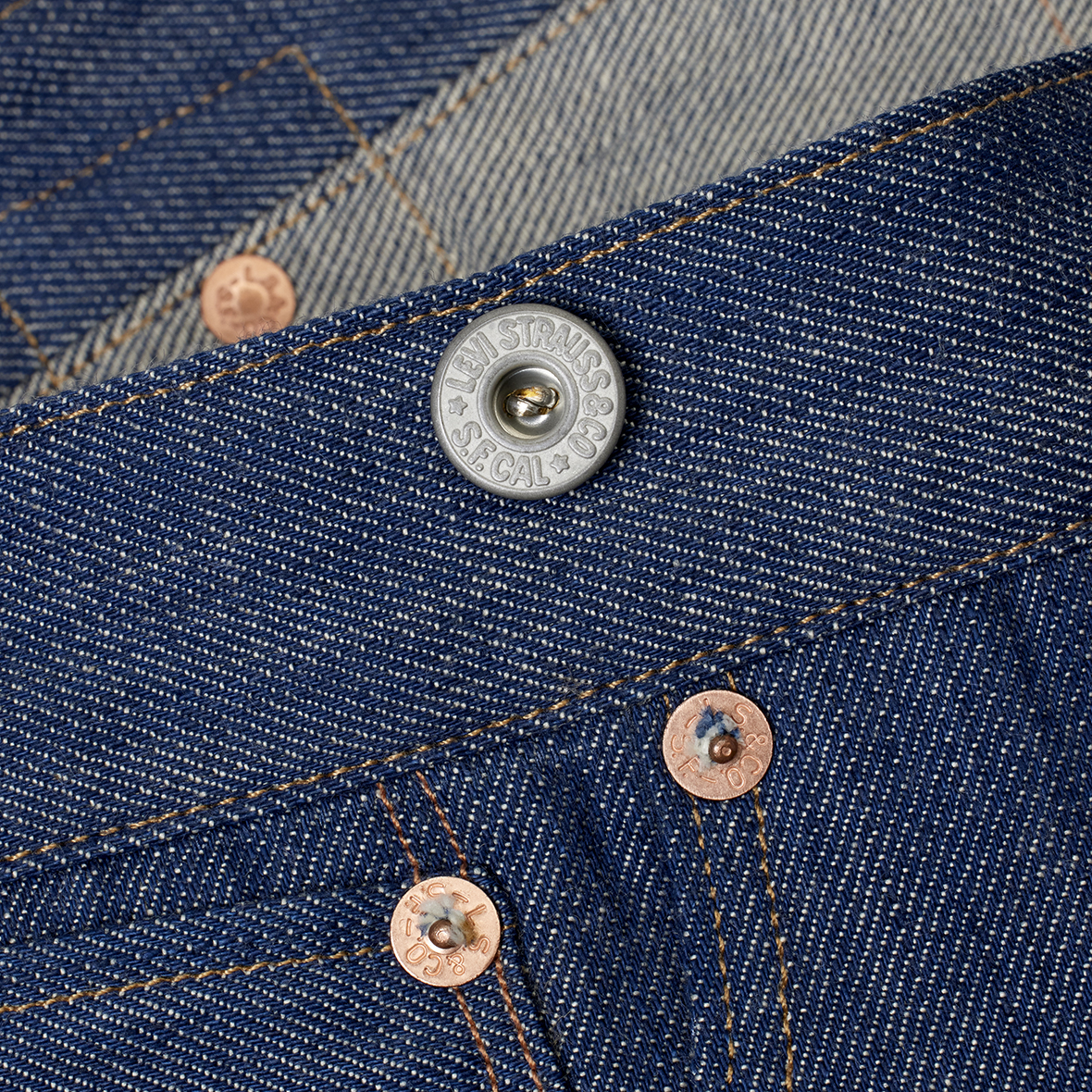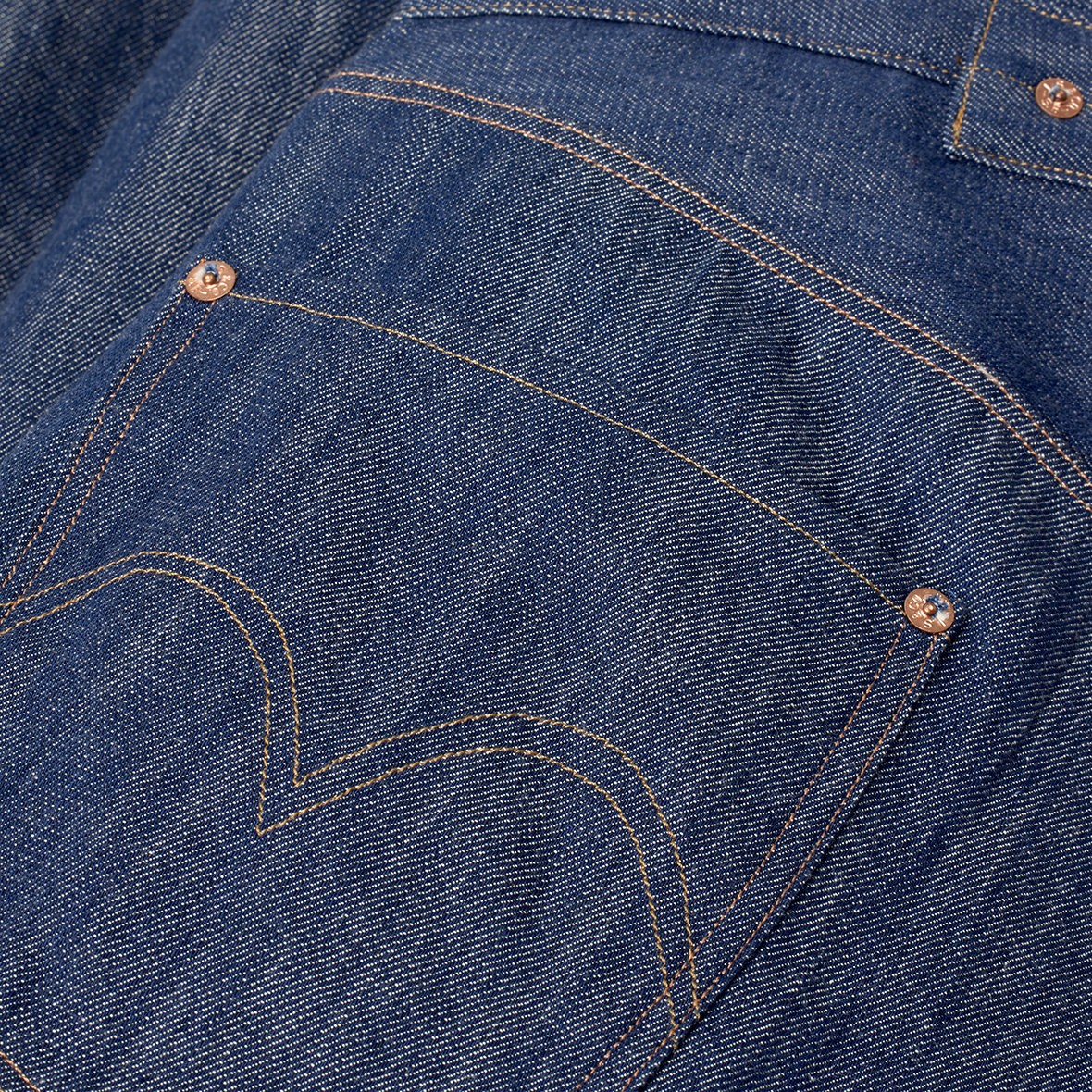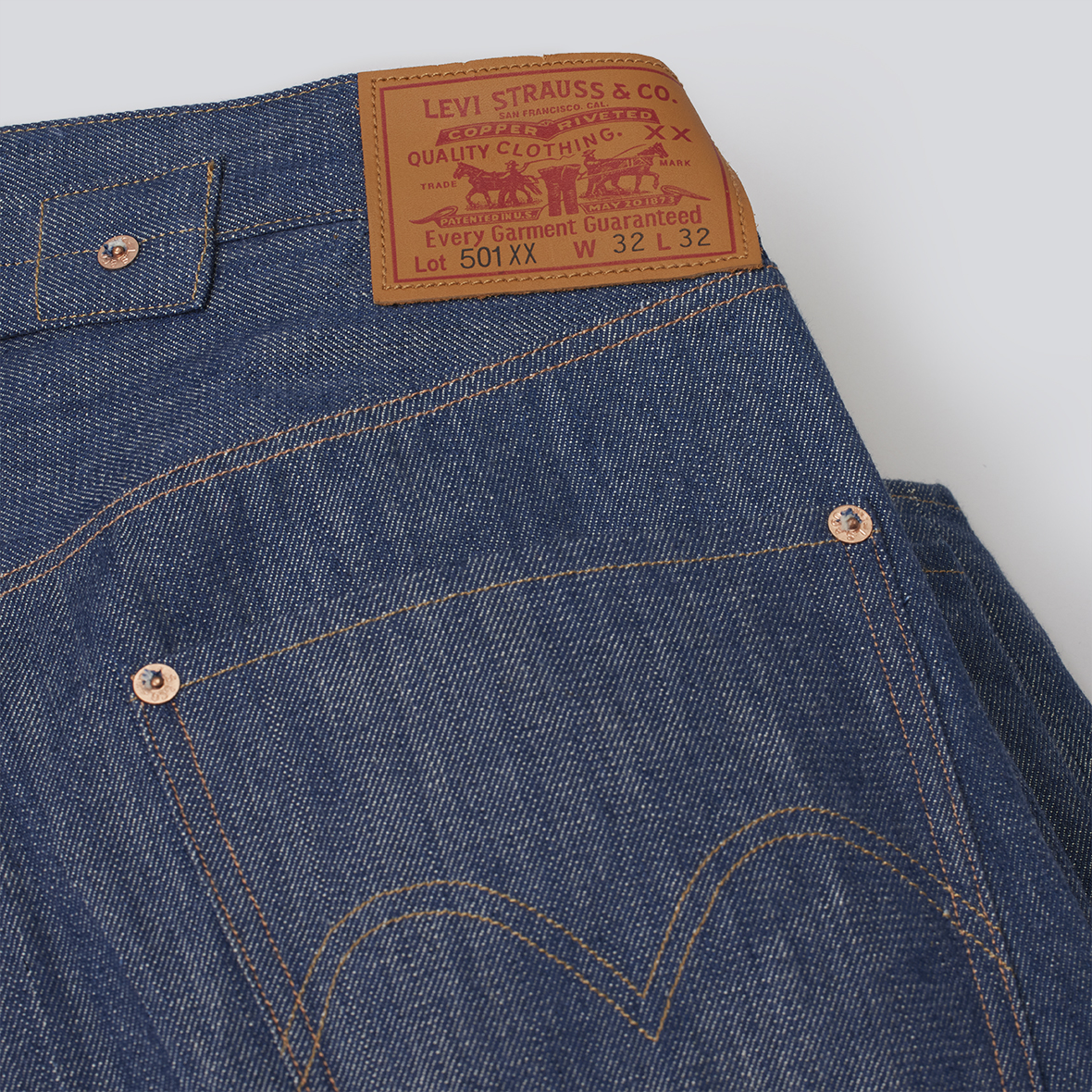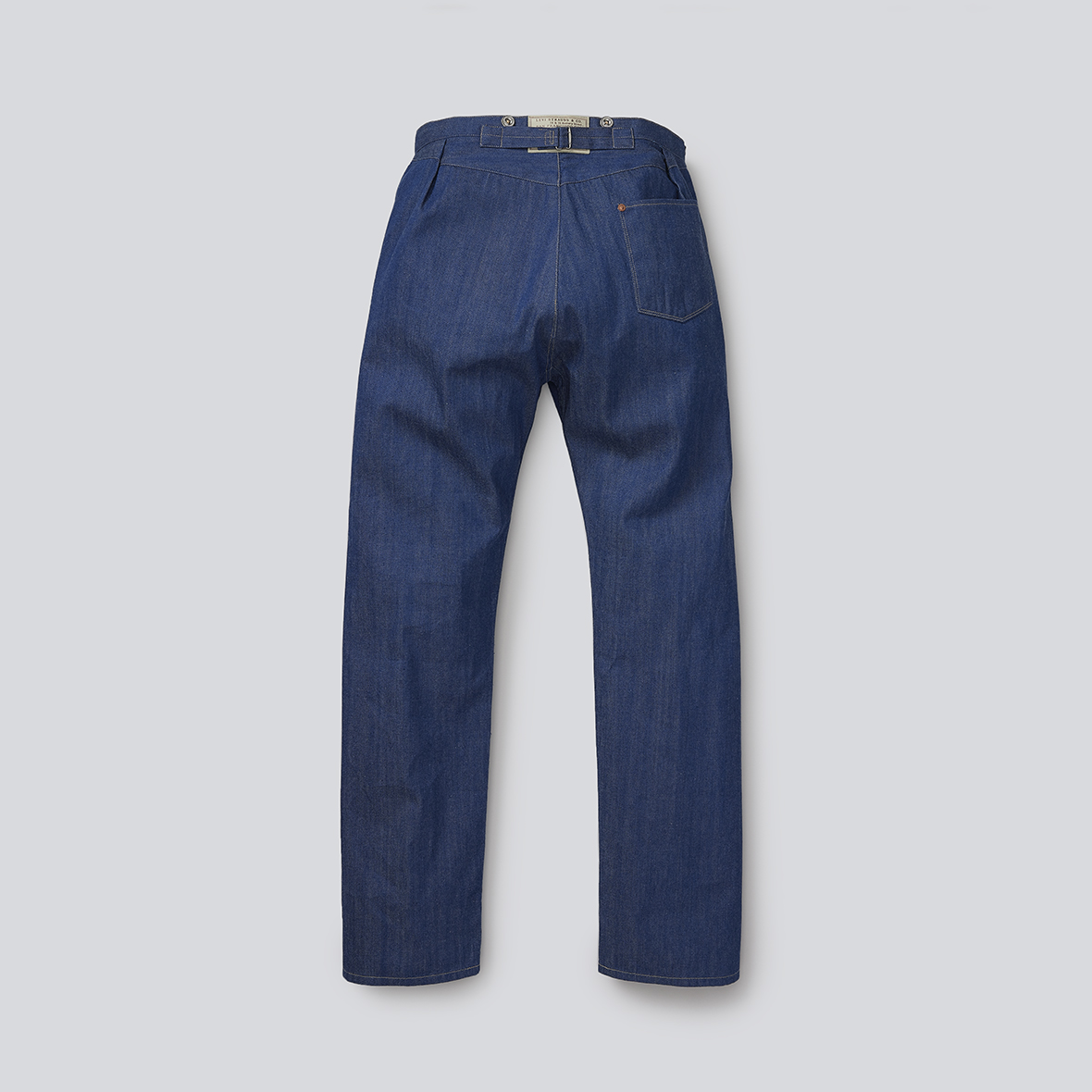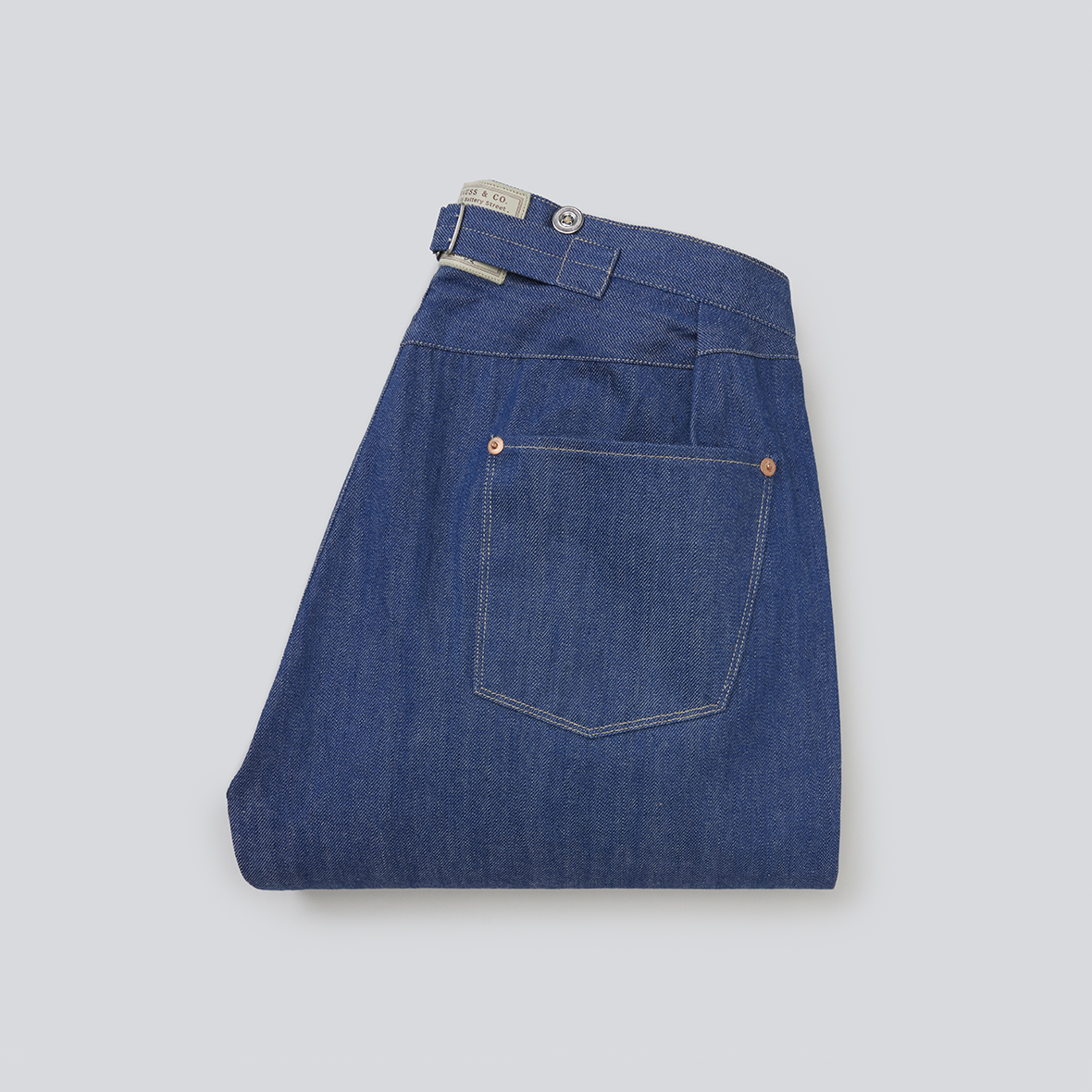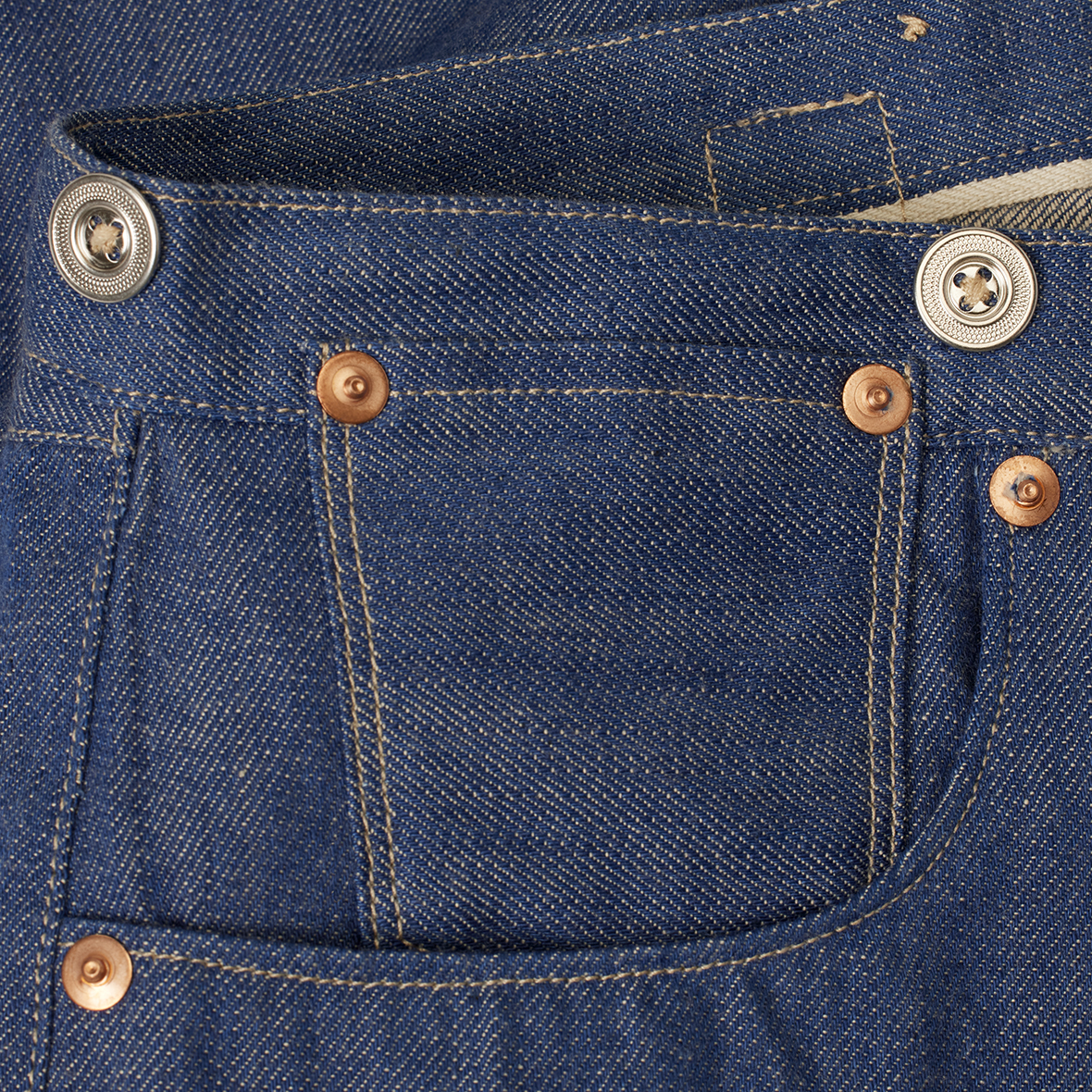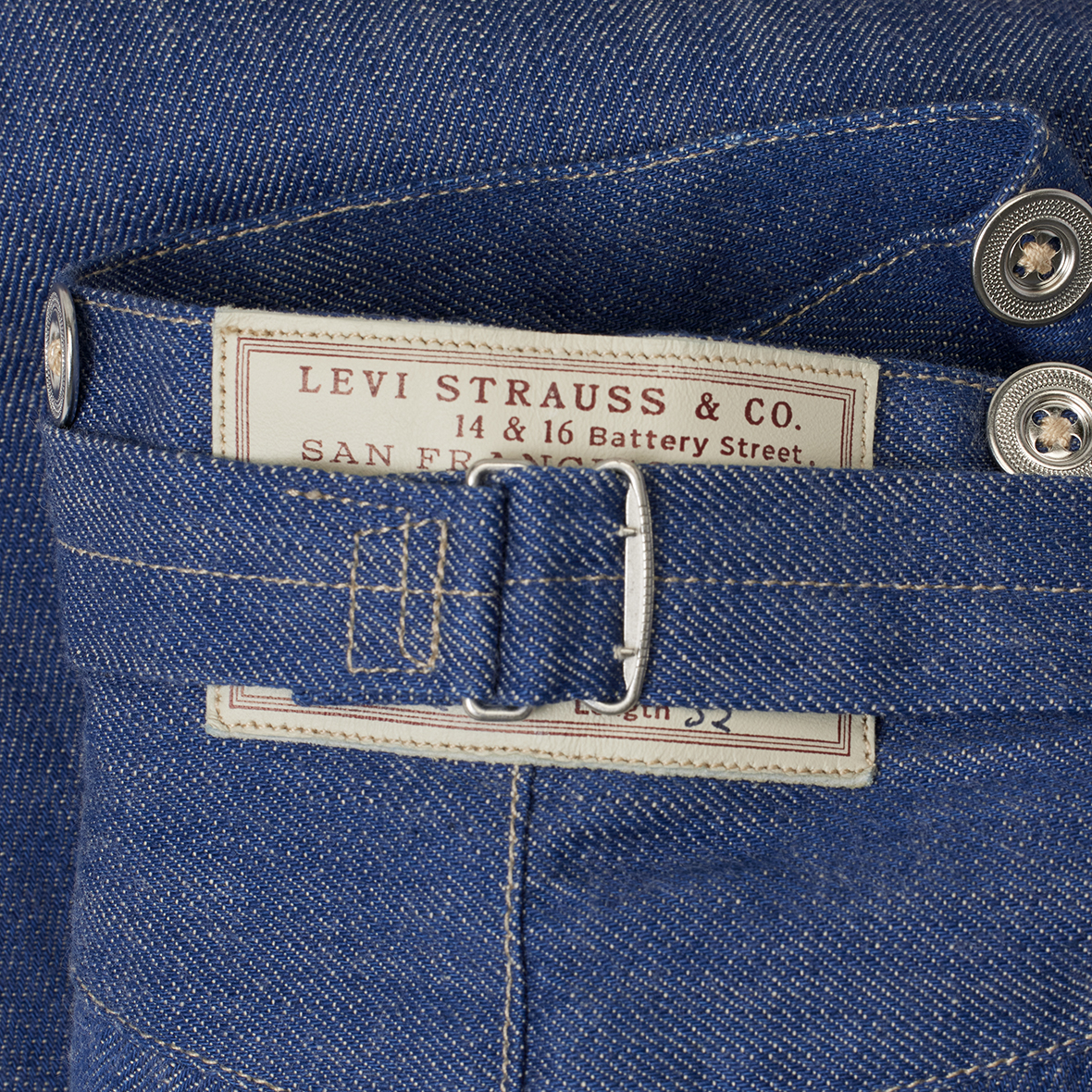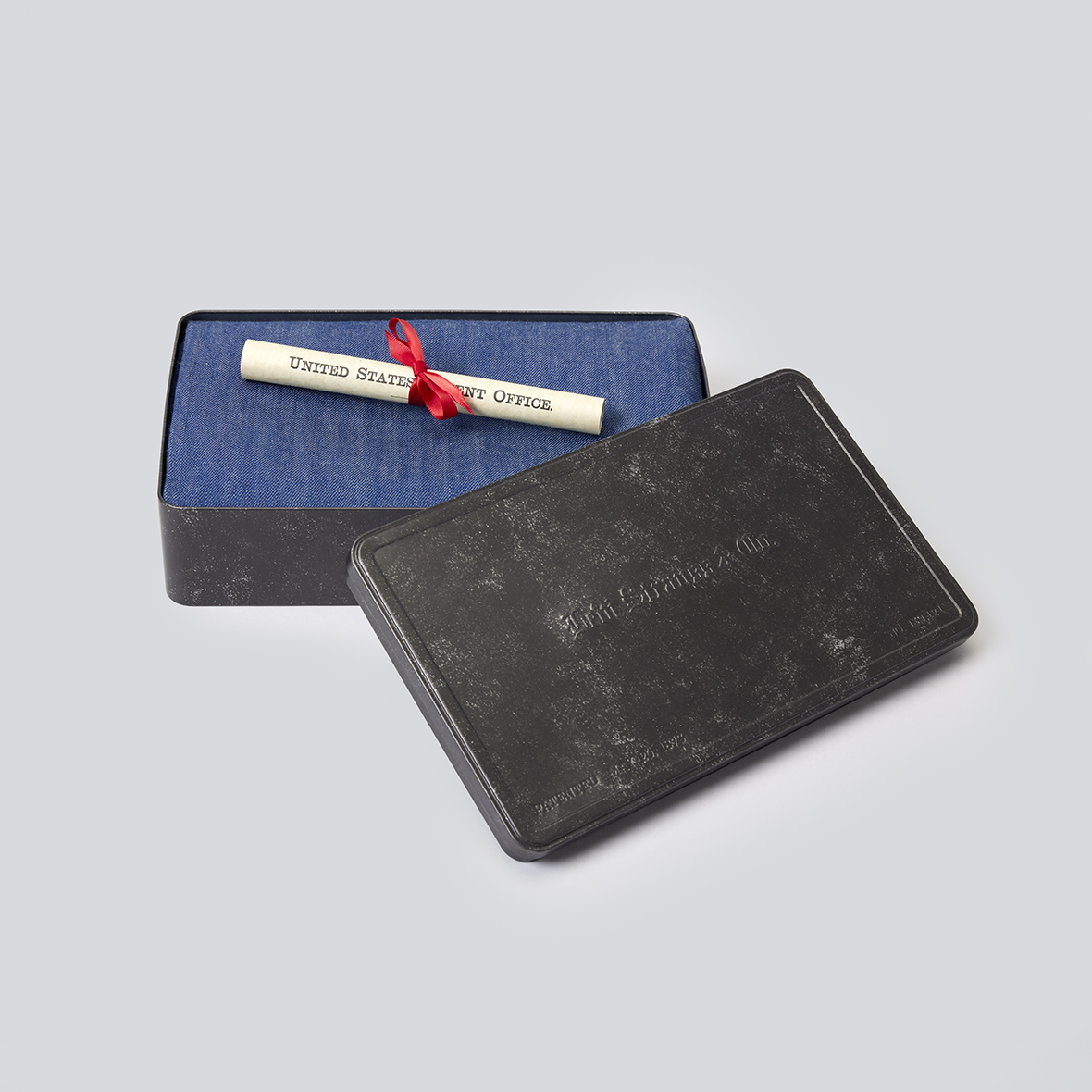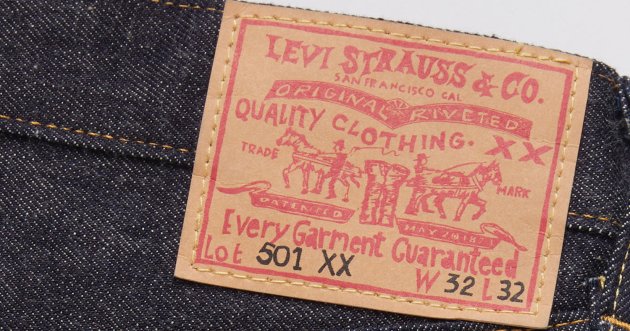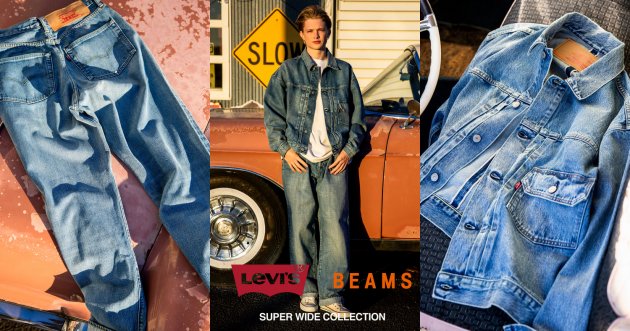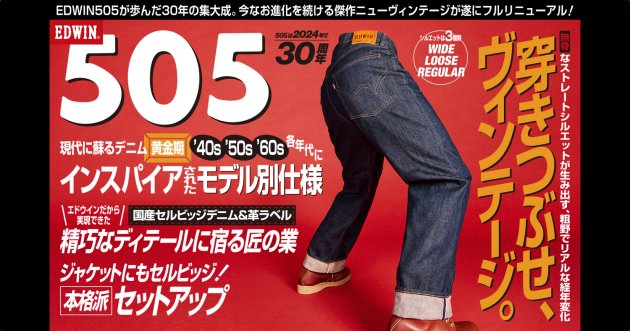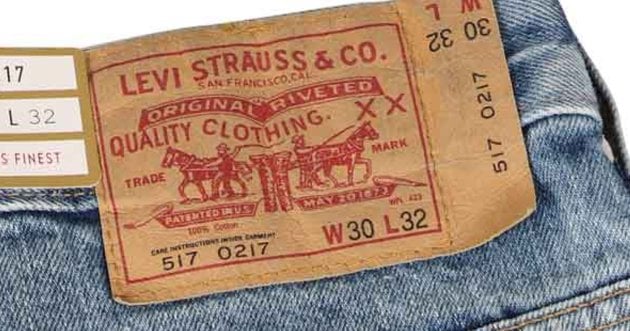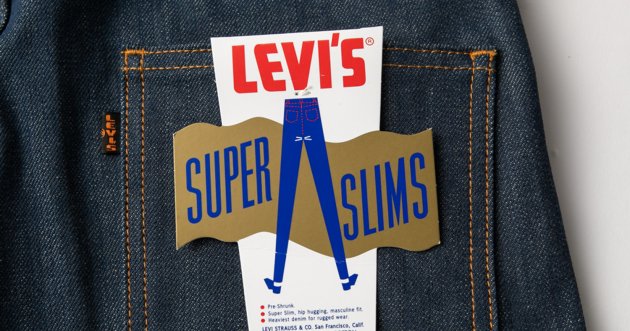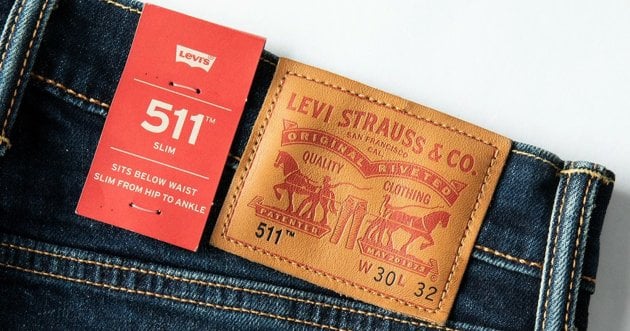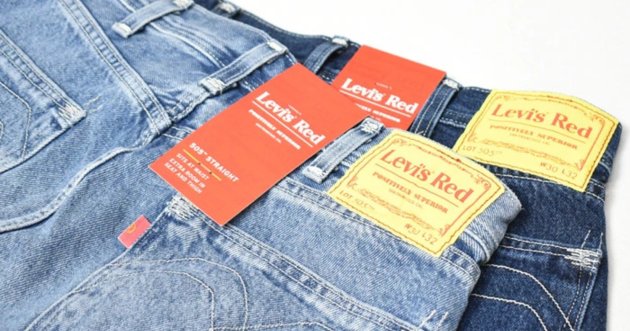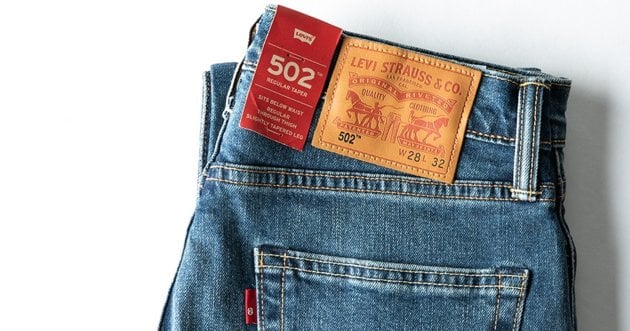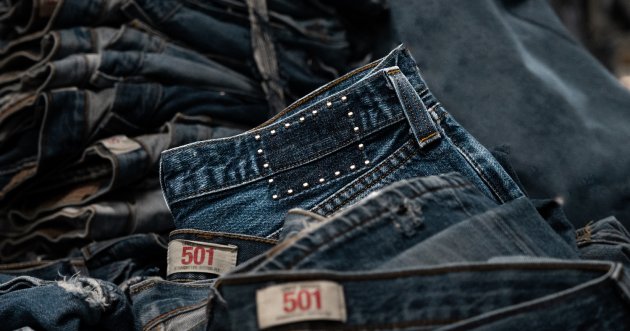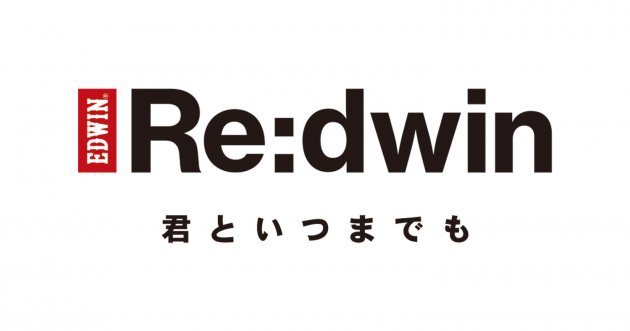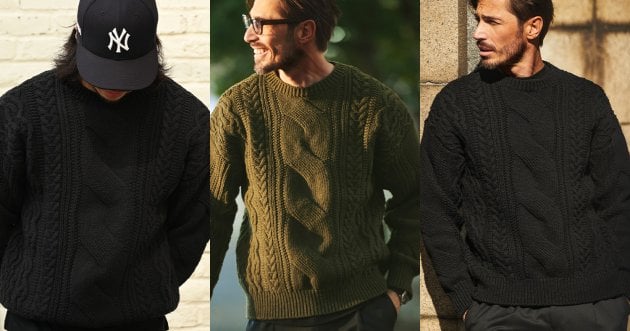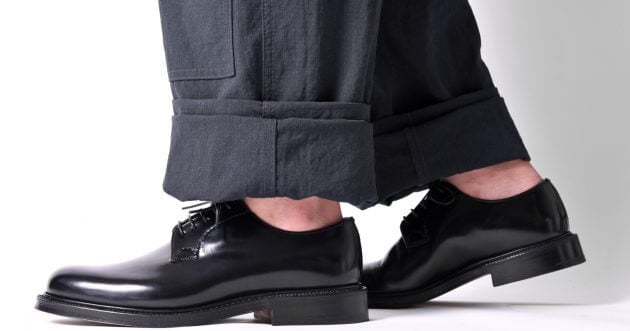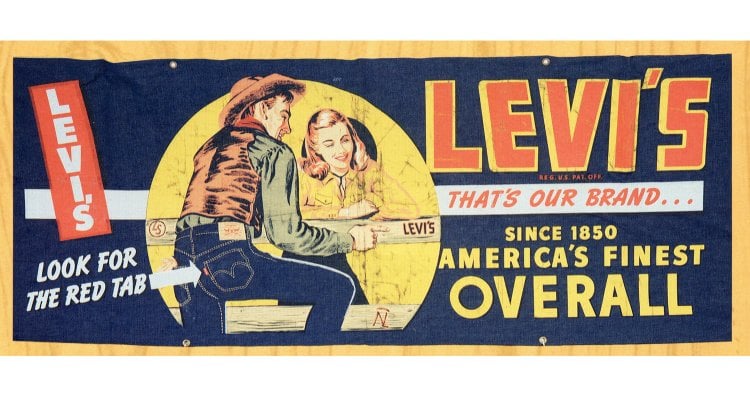
Since the prototype of jeans was created in 1873, Levi’s® (Levi’s ®︎) 501® series has been loved by people across time and cultures. 2023, the 150th anniversary year, will see a series of limited edition 501® reissue models. In this issue, we look back at the history of Levi’s® 501® and introduce the new limited reissue models!
Suponsered by
This year marks 150 years since the world’s first jeans, which later became known as Levi’s 501®, were officially introduced!
The story of 501® Originals begins when Jacob Davis invented workwear with copper rivets on canvas pants, dramatically improving their toughness. It began when Jacob Davis brought copper-riveted waist overalls to Levi Strauss, a clothing supplier. Jacob and Levi collaborated to create riveted pants made of denim and duck canvas, and on May 20, 1873, they received a patent for the copper rivet for reinforcing work pants. They officially introduced the world’s first jeans, which later became the 501®.
©Levi Strauss & Co.
Levi Strauss & Co. became popular in the early 20th century, but in 1902, the company’s founder, Levi Strauss, passed away. His nephews, the Stern brothers, who took over the company, and Milton Grunbaum, the new head of production, focused their efforts on making the 501® more durable. Later, they added belt loops to the overalls based on changes in men’s fashion and consumer feedback. Then, in 1925, the improved 501® Originals spiked profits, and by the 1930s, Levi’s ®︎ had become a staple of western workwear. Already popular among cowboys and rodeo riders, Levi’s ®︎ began to represent the romance of the West in its advertising.
©Levi Strauss & Co.
And in 1939, John Wayne wore a pair of 501® Originals with a folded hem in the movie ‘ Stagecoach’, beginning a long relationship with Hollywood.
©Levi Strauss & Co.
A simplified design due to material control during World War II has now become a coveted vintage model
During World War II, the use of materials was restricted in order to direct resources to military needs, and this led to an obligation to simplify the unique details of jeans. The use of metals such as rivets and buttons was eliminated as much as possible, and inexpensive donut buttons were used. Pocket fabric slips were replaced with military surplus herringbone and other fabrics, and even the brand’s signature arquette stitching on the back pockets was eliminated. However, Levi’s ®︎ painted the arquette stitching on the back pockets and added pocket flashers that read “For the duration (only)” in order to protect the brand’s identity. It is also important to note that the denim fabric of the 501® was not lightened during the war. After this period, cinch backs and crotch rivets were eliminated, but coin pocket rivets were restored after the war. The unique 501® from this era remains a coveted item for vintage enthusiasts to this day.
©Levi Strauss & Co.
After World War II, with the legs slightly tapered and the cinch back and shank buttons for suspenders removed, these pants were no longer work clothes but fashion items. Returning soldiers, motorcycle clubs, artists, musicians, and especially young people widely accepted the sturdy and practical 501® Originals. In the 1960s, the 501® jean was a staple of subcultures around the world. Fans of America’s legendary outdoor performances at Woodstock, the Civil Rights Movement, the Vietnam protests, and British mods and rockers all wore 501® jeans. The 501® was also used in many historical movies and on the cover of Bob Dylan’s album. Blue jeans became synonymous with youth and counterculture, and the 501® made teenagers even more obsessed.
©Levi Strauss & Co.
They were also used as currency in the former Soviet Union! Levi’s 501s continue to gain more and more value in the archives of the past®︎
In the 70s and 80s, 501® jeans became popular worldwide. They were even used as currency in the former Soviet Union. In Japan, the unprecedented vintage clothing boom made vintage 501® Originals as precious as the Holy Grail. Rock stars like Kate Bush and Kim Gordon wore shredded and torn 501®s, while hip-hop stars like Run D.M.C. and N.W.A. favored crisp, dark colors. IT moguls like Steve Jobs, bikers in Oakland, Mexicans in Los Angeles, and even hobos in Paris all wore 501®.
©Levi Strauss & Co.
In 1999, TIME magazine named 501® jeans the “Fashion Item of the 20th Century,” and they continue to enjoy unparalleled success as a global icon in the 21st century. And this season, Levi’s ®︎ introduces the men’s 501® ’54 and the women’s 501® ’81. The introduction of innovative new 501® styles will ensure that 501® will continue to secure its position as the most durable, progressive, and stylish pant for the next 150 years.
©Levi Strauss & Co.
Levi’s® Vintage Clothing Mainline & Limited-Edition Drops: Spring/Summer 2023 Seasonal Collection
Here are some of the limited-edition items that will be available from late February onward. Prices and release dates will be announced at a later date. If you register as a CLUB LEVI’S® member, you will receive special collection release dates and event details on a priority basis.
Limited-edition 1922 “White Oak” 501®Jeans
Available late February
Limited-edition 1901“White Oak” 501® Jeans
will be available in late March
Limited-edition 1890 “White Oak” 501® Jeans
will be available late April
Limited-edition 1873 “XX Waist Overalls” (Levi’s®first blue jeans)
will be available mid-May CLUB LEVI’S
[[Levi’s®501® Reproduction Limited Model]] More Information
Contact: 0120-099-501 (Levi Strauss Japan)
For official website

